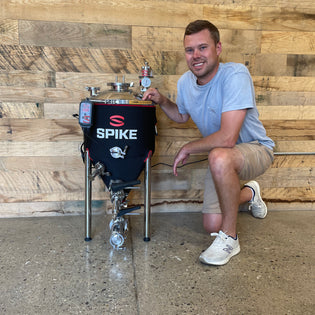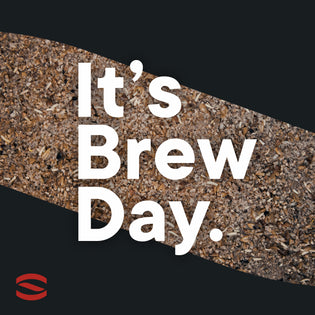By Stephanie Freimuth
One of the most important steps in the brewing process is the mash, of course! Your ABV and almost all of your flavor are dependent on this process. But what is mashing? What types of mashing are there? Mashing is the process of soaking milled malt in hot water to extract sugars from grain in pursuit of making alcohol. Like everything in beer brewing, there are different ways a brewer can complete a mash.
In this blog, we will discuss the differences between the two main styles of mashing as well the traditional step mashing method!
What Is Step Mashing?
Step mashing or temperature-programmed mashing consists of heating up the mash slowly and in “steps.” The step temperature program is determined based on the malts in your recipe. Usually, a brewer will have three temperature changes and rests. These include a warming period, saccharification (the conversion of starches into sugars), and a final heat rise. Temperatures during these periods will range from 104F - 167F (pg 789, Oxford Companion of Beer).
You can use step mashing with direct heat, infusion mashing or decoction (pg 263, How to Brew). Step mashing benefits and aids in the starch conversion process in the malts with each temperature raise and rest.
Does Step Mashing Make A Difference?
Read on to see how step mashing measures up when looking at the benefits and disadvantages.
Benefits of Step Mashing
Step mashing is beneficial for beers that use higher-protein malts, starchy adjuncts and/or unmalted grains (pg 27, The Brewmaster's Bible).
Similarly, step mashing also allows the brewer complete control over their brew, as you’re taking advantage of the ability to manipulate as much body and flavor from your malt as possible.
Disadvantages of Step Mashing
Traditionally, step mashing was necessary to maximize enzyme activity in malt when brewing. However, most commercial grains today are already modified this way and do not need a range of temperature rests for optimal enzyme activity.
It also takes time and know-how to step mash. You have to adjust your rests based on your grain bill—this can get pretty tricky and research is required. This is not a suggested mash style for new brewers.
What Are Two Different Types of Mashing?
Infusion Mashing
Hot liquor (hot brewing water) is blended with malts to create a mash. Infusions that only have one rest at saccharification temperature is called single infusion mashing. Usually this temperature ranges between 146F-156F. This mashing style is more universally and commonly used. (pg 488, Oxford companion of beer).
The most common homebrewing mash infusion mash schedule has a grain ratio of 1.5 qt’s/lb of grain and requires holding your mash between 150F and 155F for about one hour. (pg 277, How to Brew)
Decoction Mashing
Decoction mashing is to remove part of the mash, boil it and then return it to the main mash that is held at a consistent temperature. Two main goals in boiling part of the mash is to destroy the cell walls of the malt making the starches more accessible to the enzymes. Also to raise the temperature of the main mash.
Before thermometers this was a way of making a multi-temperature mash doable. Three kinds of decoction mashing, triple, double, and single. (pg 281- 282, Oxford Companion of Beer).

Which Is Better: Infusion or Decoction Mashing?
No style is better! Just depends on the style of beer, what malts are being used, and what limitations/equipment the brewer has.
Decoction mashing is an easy way to conduct step mashing without adding more water or applying direct heat to your mash tun. It helps with extracting more malt character and tends to increase the hot break and clarity of wort (pg 272, How To Brew).
Some also claim decoction mashing develops superior foam. Other modern brewers think it’s a waste of time as well-modified malts are more widely available (pg 281, Oxford Companion of Beer). Decoction mashing is also regarded as the most traditional and original way of mashing, historically respected.
Infusion mashing can make it harder to produce wheat beers, as those usually need a temperature rest at a lower temperature. Single infusion mashing only has one temperature rest at usually higher temperatures (pg 282, Oxford Companion of Beer). This is where one would use step mashing or a temperature programmed infusion mash.

Final Thoughts
This is a great overview and starts with the basics for mashing. Most of the time, a brewer will just use a simple single infusion mash on Brew Day. However, it could be fun to experiment and try out these other styles. If desired, a brewer could spend a lifetime studying and perfecting the art and science of extracting sugars from grain to make beer.
One thing to note is that it's important you have the proper equipment for what you want to accomplish. For example, you’ll need another vessel to boil your mash if trying the decoction method.
Looking to find another kettle? Equipment is always something Spike can help with. Some say I might be biased, but I like to think I just know how to spot great equipment.

As a former career bartender and current beer connoisseur, Stephanie Freimuth brings years of experience to her Customer Experience role at Spike. Whether you're a guest at her bar or a customer in her inbox, she puts a smile on your face.





